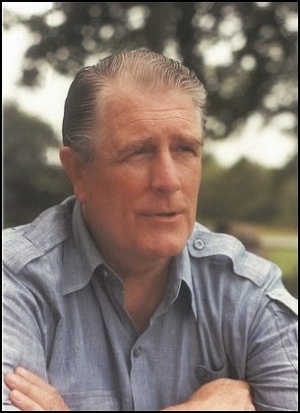Difference between revisions of "John H. Waller"
(lede) |
|||
| Line 14: | Line 14: | ||
|description=Successfully covered up the [[Arms for Libya]] deal.}} | |description=Successfully covered up the [[Arms for Libya]] deal.}} | ||
}} | }} | ||
| + | '''John H. Waller''' was a senior CIA officer who as [[CIA Inspector General]] attempted to cover up the [[Arms for Libya]] deal. | ||
==Career== | ==Career== | ||
In 1943 after he was rejected for military service due to an ear disorder, Waller began serving in the [[Office of Strategic Services]], working in [[counterespionage]].<ref name="The Washington Post; November 7, 2004">The Washington Post; November 7, 2004</ref><ref name="The New York Times; November 9, 2004">The New York Times; November 9, 2004</ref> From 1947 to 1953, Waller served as [[vice-consul]] with the [[United States Foreign Service]] in [[Iran]]. He was a special assistant to the ambassador in [[New Delhi, India]] from 1955 to 1957 and from 1968 to 1971. Waller served in [[Khartoum, Sudan]] from 1960 to 1960, then as an analyst in the [[United States Department of State]] from 1962 to 1968. Waller was Chief of the CIA's Near East Division from 1971 to 1975, then Inspector General of the Agency from 1976 to 1980.<ref name="The Washington Post; November 7, 2004"/> | In 1943 after he was rejected for military service due to an ear disorder, Waller began serving in the [[Office of Strategic Services]], working in [[counterespionage]].<ref name="The Washington Post; November 7, 2004">The Washington Post; November 7, 2004</ref><ref name="The New York Times; November 9, 2004">The New York Times; November 9, 2004</ref> From 1947 to 1953, Waller served as [[vice-consul]] with the [[United States Foreign Service]] in [[Iran]]. He was a special assistant to the ambassador in [[New Delhi, India]] from 1955 to 1957 and from 1968 to 1971. Waller served in [[Khartoum, Sudan]] from 1960 to 1960, then as an analyst in the [[United States Department of State]] from 1962 to 1968. Waller was Chief of the CIA's Near East Division from 1971 to 1975, then Inspector General of the Agency from 1976 to 1980.<ref name="The Washington Post; November 7, 2004"/> | ||
| Line 26: | Line 27: | ||
==References== | ==References== | ||
{{Reflist}} | {{Reflist}} | ||
| − | |||
Revision as of 13:35, 19 October 2018
(spook) | ||||||||||||||||
|---|---|---|---|---|---|---|---|---|---|---|---|---|---|---|---|---|
 | ||||||||||||||||
| Born | May 8, 1923 Paw Paw, Michigan, USA | |||||||||||||||
| Died | November 4, 2004 (Age 81) Arlington, Virginia, USA | |||||||||||||||
Produced a report into the infamous Arms For Libya scandal which exonerated the CIA.
| ||||||||||||||||
John H. Waller was a senior CIA officer who as CIA Inspector General attempted to cover up the Arms for Libya deal.
Career
In 1943 after he was rejected for military service due to an ear disorder, Waller began serving in the Office of Strategic Services, working in counterespionage.[1][2] From 1947 to 1953, Waller served as vice-consul with the United States Foreign Service in Iran. He was a special assistant to the ambassador in New Delhi, India from 1955 to 1957 and from 1968 to 1971. Waller served in Khartoum, Sudan from 1960 to 1960, then as an analyst in the United States Department of State from 1962 to 1968. Waller was Chief of the CIA's Near East Division from 1971 to 1975, then Inspector General of the Agency from 1976 to 1980.[1]
Arms for Libya Cover-up
- Full article:
 Arms for Libya
Arms for Libya
- Full article:
During his tenure as Inspector General, Waller led the CIA's internal investigation of the arms for Libya weapons deal involving CIA agents Edwin P. Wilson and Frank E. Terpil.[3] His report was released [When?] and exonerated senior intelligence officials Theodore Shackley, deputy to the director of clandestine operations, and Thomas Clines, director of training in the clandestine services.[3]
Later activities
During Lawrence Walsh's investigation of the Iran–Contra affair, Waller and four other former CIA officials served as trustees of a defense fund set-up to help pay the legal expenses of at least six individuals who were serving or had served with the CIA during the event.[4]